27 Jul The New Rules for Resumes in Today’s Job Market
Sometimes, in the whirlwind of job hunting, it feels like the only constant is change. But there’s one steadfast truth, as reliable as your favorite pair of jeans: the importance of a well-crafted resume. This critical document serves as your professional introduction, making a strong and lasting first impression on potential employers. In years past, resume writing rules were quite rigid, focusing on formal language, lengthy descriptions, and a comprehensive history of your every career move. But as the job market evolves, so do the resumes’ standards. Understanding the new rules for resumes can make all the difference in ensuring your resume stands out from the crowd.
New Rules for Resumes
1. Be Concise
Gone are the days when multi-page resumes were the standard. Today, hiring managers appreciate brevity. Aim for a single page with your work experience not exceeding the last ten years. Only extend to two pages if you have more extensive experience or achievements that warrant it.
2. Chronological Resumes
Tell your story chronologically and be straightforward about gaps. Use additional sections on volunteer work or passion projects to amplify any non-paid work experience.
3. Objectives are key
We used to call them objectives but now they read more like personal branding statements. You can still label it Career Objective, but make sure you talk about what you are looking for and why you are qualified for the position to which you are applying.
4. Tailor Your Resume
Customize your resume for each job application. Employers appreciate candidates who have taken the time to understand their needs and present relevant skills and experiences. This shows initiative and a genuine interest in the role. It’s not uncommon to have multiple versions of your resume.
5. Use of Keywords
With the rise of Applicant Tracking Systems (ATS), the inclusion of relevant keywords in your resume is crucial. ATS software scans resumes for specific terms related to the job description. If your resume lacks these keywords, it may be overlooked, regardless of how qualified you are.
To ensure your resume is the best representation of you, follow these simple dos and don’ts.
DOs
- Do use a modern font like Calibri. Times Roman is out, out, out.
- Do include your LinkedIn profile link. It should be up-to-date and consistent with your resume.
- Do use hyperlinks to your employers’ websites. This way you don’t have to use up valuable space telling THEIR story.
- Do use bullets. Paragraphs are hard to scan. List your bullets in importance and not by how you spent your time.
- Do quantify your achievements. Use numbers, percentages, or other concrete measures of your success.
- Do include certifications you have received.
- Do include your levels of education, but that doesn’t mean you have to include all of it. For example, if you have a Master’s Degree, stating where you went to high school is not necessary.
DON’Ts
- Don’t add pictures. That’s where LinkedIn comes in.
- Don’t add any color or fancy formatting. Most systems will distort it or require a hiring manager to manipulate it to read it. Any additional effort will result in a hiring manager deciding to skip you.
- Don’t give a street address. Privacy concerns are real. You have the right to keep this to yourself.
- Don’t include more than 3 sentences in your objective.
- Don’t write paragraphs.
- Don’t include more than a decade’s worth of experience of if you must, collapse that experience to a series of single lines.
- Don’t include the year you graduated. Ageism is real.
Adjusting to the new rules of resumes might take some time, but the payoff will be worth the effort. Remember, your resume isn’t just a record of your past; it’s a showcase of your potential. Ensure it reflects the current trends and expectations of today’s job market. So, dust off that keyboard and put on your best writing hat; your next job opportunity is just around the corner. Happy job hunting!


